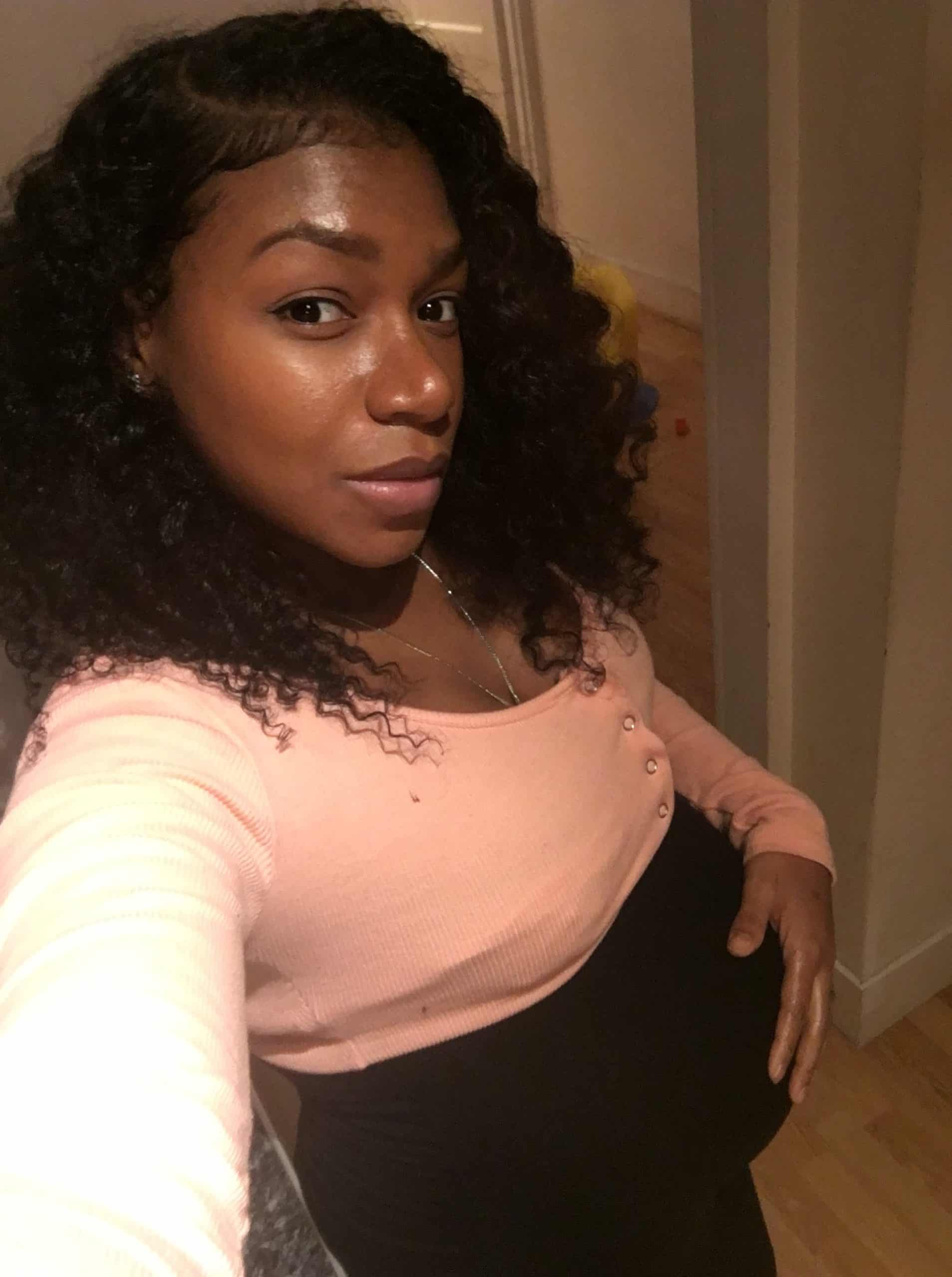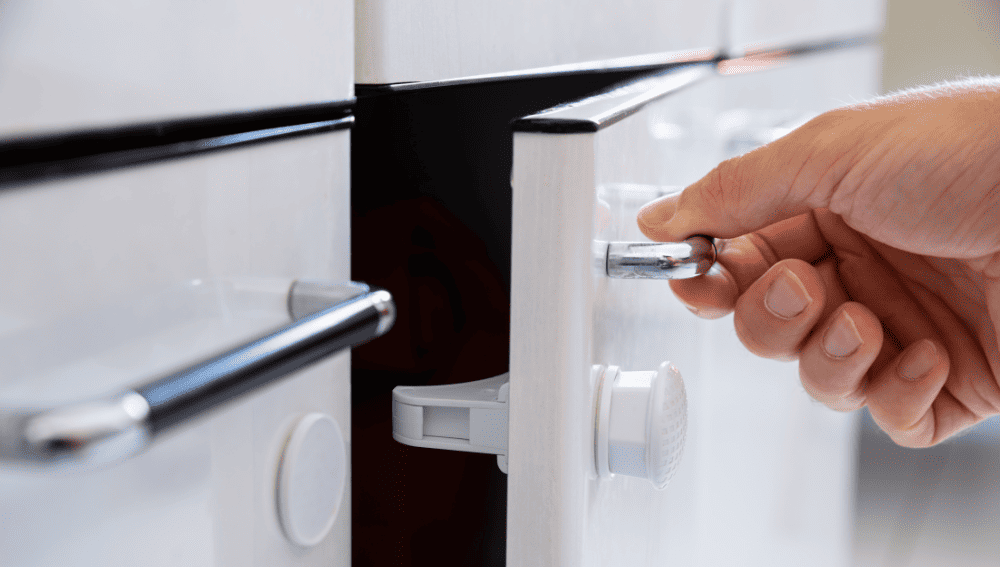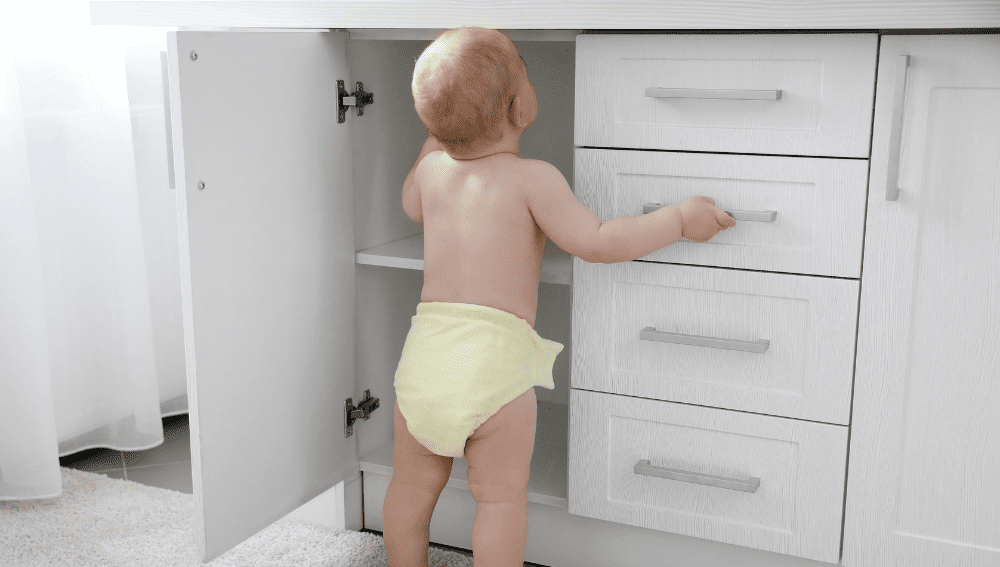Baby proofing cabinets is an essential aspect of child safety in the home. Children are naturally curious and love to explore their environment. They often find themselves drawn to cabinets and drawers, which can pose a significant danger if not properly secured.
In this article, we will discuss how to baby proof cabinets and drawers to ensure your child’s safety.
Understanding the Importance of Baby Proofing Cabinets Cabinets and drawers can contain hazardous materials such as cleaning products, sharp utensils, and small objects that can cause choking.
It is crucial to secure these areas to prevent your child from accessing harmful items. Baby proofing cabinets is not only essential for your child’s safety but also provides peace of mind for parents.
Identifying Potential Hazards in Cabinets Before baby proofing your cabinets, it is essential to identify potential hazards. This includes removing any hazardous items from the cabinets and drawers and ensuring that they are stored in a secure location.
It is also essential to inspect the cabinets and drawers for any loose or broken parts that can pose a danger to your child.
Key Takeaways
- Baby proofing cabinets is crucial for your child’s safety and provides peace of mind for parents.
- Identifying potential hazards in cabinets is the first step in ensuring your child’s safety.
- Removing hazardous items from cabinets and drawers and inspecting them for any loose or broken parts is essential.
Understanding the Importance of Baby Proofing Cabinets
When it comes to child safety, baby proofing cabinets is an essential step that parents need to take. With little ones curious about everything around them, they can easily open cabinets and drawers, leading to potential hazards.
Therefore, it is crucial to understand the importance of baby proofing cabinets to ensure your child’s safety.
Cabinets can pose various dangers, including access to harmful chemicals, sharp objects, and even heavy items that can fall and cause injury. Baby proofing cabinets can prevent these accidents from occurring.
It involves installing locks or latches on cabinets and drawers to prevent children from opening them.
There are several types of baby-proofing products available in the market, including magnetic locks, adhesive locks, and sliding locks.
Parents can choose the type of lock that suits their needs and preferences. Additionally, some locks are easy to install, while others may require more effort.
In conclusion, baby proofing cabinets is an essential aspect of child safety. It can prevent children from accessing harmful objects and prevent accidents from occurring.
Parents need to take the necessary steps to ensure their child’s safety by installing locks or latches on cabinets and drawers.
Identifying Potential Hazards in Cabinets
Before baby proofing cabinets, it is important to identify potential hazards that may exist within them. Cabinets can contain a variety of dangerous items, such as knives, cleaning materials, and hazardous products.
By identifying these hazards, parents can take the necessary steps to prevent accidents and keep their children safe.
Cabinet Doors and Drawers
Cabinet doors and drawers can be a hazard if they are not secured properly. Children can easily open them and access dangerous items inside.
Parents should ensure that all cabinet doors and drawers have childproof locks or latches installed to prevent children from opening them.
Dangerous Items
Cabinets can contain a variety of dangerous items, including sharp knives, cleaning materials, and hazardous products. Parents should take inventory of the items in their cabinets and remove any that could be harmful to their children.
Sharp knives should be stored in a knife block or on a magnetic strip out of reach of children. Cleaning materials and hazardous products should be stored in cabinets with childproof locks or latches.
Appliances and Cords
Appliances and cords can also be a hazard if they are not stored properly. Parents should ensure that appliances are unplugged and stored in cabinets out of reach of children. Any cords should be wrapped up and secured to prevent children from pulling on them.
Medication and Personal Hygiene Products
Medication and personal hygiene products should be stored in cabinets with childproof locks or latches. Parents should also ensure that these items are stored out of reach of children, as they can be harmful if ingested.
Automotive Supplies, Pantry Items, and Valuables
Automotive supplies, pantry items, and valuables should also be stored in cabinets with childproof locks or latches. Parents should ensure that these items are stored out of reach of children to prevent accidents and damage.
By identifying potential hazards in cabinets, parents can take the necessary steps to prevent accidents and keep their children safe. Installing childproof locks or latches on cabinets can provide an added layer of protection and prevent children from accessing dangerous items.
Baby Proofing Kitchen Cabinets
When it comes to baby proofing the kitchen, one of the most important things to consider is cabinet safety. Babies and toddlers are curious creatures who love to explore their surroundings, and this often includes opening and closing cabinets.
Here are some tips on how to baby proof kitchen cabinets:
Magnetic Locks
Magnetic locks are a popular choice for baby proofing cabinets because they are easy to install and use. These locks work by attaching a magnetic key to the outside of the cabinet door, which unlocks the lock on the inside of the cabinet.
Magnetic locks are also great because they do not require any drilling or adhesive, which means they can be easily removed without causing damage to your cabinets.
Adhesive Latches
Adhesive latches are another option for baby proofing cabinets. These latches are easy to install and use, and they work by attaching to the inside of the cabinet door and the frame of the cabinet.
Adhesive latches are a good choice for cabinets that are not frequently used, as they can be difficult to open and close.
Cabinet Locks
Cabinet locks are another option for baby proofing cabinets. These locks work by attaching to the outside of the cabinet door and the frame of the cabinet. Cabinet locks are a good choice for cabinets that are frequently used, as they can be easily opened and closed with one hand.
Drawer Locks
Drawer locks are an important part of baby proofing cabinets, as babies and toddlers love to explore drawers. Drawer locks work by attaching to the inside of the drawer and the frame of the cabinet.
Drawer locks are a good choice for drawers that are frequently used, as they can be easily opened and closed with one hand.
Rubber Bands
Rubber bands are a simple and inexpensive way to baby proof cabinets. Simply wrap a rubber band around the cabinet knobs or handles to prevent your baby from opening the cabinet.
Rubber bands are a good choice for cabinets that are not frequently used, as they can be difficult to open and close.
Outlet Covers
Outlet covers are an important part of baby proofing the kitchen, as babies and toddlers love to explore electrical outlets. Outlet covers work by covering the electrical outlet and preventing your baby from inserting fingers or objects into the outlet.
Outlet covers are a good choice for outlets that are not frequently used, as they can be difficult to remove and replace.
Stove Knob Covers
Stove knob covers are an important part of baby proofing the kitchen, as babies and toddlers love to explore stove knobs. Stove knob covers work by covering the stove knobs and preventing your baby from turning on the stove.
Stove knob covers are a good choice for stoves that are not frequently used, as they can be difficult to remove and replace.
Cleaning Products
Cleaning products are an important part of baby proofing the kitchen, as babies and toddlers love to explore cleaning products.
Keep all cleaning products out of reach and locked up in a cabinet or drawer. Consider using child proof cabinet locks or drawer locks to keep cleaning products out of reach.
Pantry Items
Pantry items are an important part of baby proofing the kitchen, as babies and toddlers love to explore pantry items. Keep all pantry items out of reach and locked up in a cabinet or drawer.
Consider using child proof cabinet locks or drawer locks to keep pantry items out of reach.
Sharp Knives
Sharp knives are an important part of baby proofing the kitchen, as babies and toddlers love to explore sharp objects. Keep all sharp knives out of reach and locked up in a cabinet or drawer. Consider using child proof cabinet locks or drawer locks to keep sharp knives out of reach.
Climbing
Babies and toddlers love to climb, so it’s important to keep them away from cabinets and drawers that they can climb on. Consider using baby gates or a tension rod to block off areas of the kitchen that are not safe for your baby to explore.
By following these tips, you can help ensure that your kitchen is a safe and secure environment for your baby to explore.
Childproofing Other Cabinets and Drawers in the House
In addition to the kitchen, there are many other cabinets and drawers in the house that require childproofing.
Here are some tips to help keep your little one safe:
1. Install Locks on Cabinets and Drawers
Just like in the kitchen, cabinets and drawers in other areas of the house should be secured with locks to prevent your child from accessing hazardous materials or making a mess.
There are a variety of locks available, including magnetic key locks, sliding cabinet locks, and latch locks. Adhesive cabinet locks and strap locks are also options for those who don’t want to use hardware.
2. Secure Furniture
Tall dressers and bookshelves can be a hazard if they are not secured to the wall. Use furniture anchors to prevent them from tipping over and potentially injuring your child.
3. Babyproof the Bathroom
The bathroom can be a dangerous place for a curious toddler. Install locks on cabinets and drawers that contain cleaning products, personal hygiene products, and medicine. Consider installing a toilet seat lock to prevent your child from playing in the toilet.
4. Organize Hazards
If you have a lot of cleaning supplies or other hazardous materials, consider organizing them in a locked cabinet or on a high shelf. This will not only keep your child safe, but also make it easier to find what you need.
5. Use Baby Gates
Baby gates are a great way to keep your child out of certain areas of the house, such as the stairs or a room with valuables. Make sure to use a gate that is appropriate for your child’s age and weight.
6. Secure Trash Cans and Plastic Bags
Trash cans and plastic bags can be a choking hazard for young children. Make sure to secure them with a lid or keep them out of reach.
7. Lock the Refrigerator and Freezer
If your child is prone to snacking, consider installing a lock on the refrigerator and freezer to prevent them from eating unhealthy foods or choking on small items.
By following these tips, you can help keep your child safe and prevent accidents in other areas of the house.
Read a related post: How To Get Washable Marker Off Skin
Recommended Baby Proofing Products
When it comes to baby proofing cabinets, there are several products available in the market that can help keep your little ones safe.
Here are some of the recommended baby proofing products:
Magnetic Locks
Magnetic locks are easy to install and use. They work by using a magnetic key to unlock the cabinet. This type of lock is ideal for parents who want a quick and easy solution to keep their cabinets locked.
Cabinet Locks
Cabinet locks are another popular option for baby proofing cabinets. They come in various styles, including latch locks, sliding cabinet locks, and spring-loaded cabinet locks. Cabinet locks are easy to install and use, and they provide an extra layer of security to keep your little ones safe.
Drawer Locks
Drawer locks are designed to keep drawers closed and prevent little fingers from getting caught. They come in various styles, including adhesive drawer locks and cord drawer locks. Drawer locks are easy to install and use, and they are an effective way to keep your little ones safe.
Safety Locks
Safety locks are versatile and can be used to secure a wide range of items, including cabinets, drawers, and appliances. They come in various styles, including adhesive strap locks and slide locks.
Safety locks are easy to install and use, and they provide an extra layer of security to keep your little ones safe.
Munchkin Xtraguard Dual Action Multi-Use Latches
Munchkin Xtraguard Dual Action Multi-Use Latches are designed to secure cabinets, drawers, and appliances. They are easy to install and use, and they provide a dual locking system to keep your little ones safe.
Kiscords Baby Safety Cabinet Locks
Kiscords Baby Safety Cabinet Locks are designed to secure cabinets and drawers. They are easy to install and use, and they provide a simple but effective way to keep your little ones safe.
No-Drill Cabinet Locks
No-Drill Cabinet Locks are designed to secure cabinets without drilling holes. They come in various styles, including adhesive cabinet locks and magnetic cabinet locks. No-Drill Cabinet Locks are easy to install and use, and they provide an extra layer of security to keep your little ones safe.
When it comes to baby proofing cabinets, there are many options available. Choose the product that best suits your needs and provides the most effective solution to keep your little ones safe.
Additional Safety Measures for Baby Proofing
In addition to the standard baby proofing measures, there are a few additional safety measures that parents can take to ensure their child’s safety.
Install Baby Gates
Baby gates are an essential safety measure that can prevent your child from accessing unsafe areas. Install baby gates at the top and bottom of stairs, and in doorways leading to rooms that are off-limits.
Secure Trash Cans and Plastic Bags
Trash cans and plastic bags can pose a suffocation hazard to young children. Keep trash cans in a locked cabinet or use a trash can with a childproof lid. Also, keep plastic bags out of reach of children.
Install Stove Knob Covers
Stove knob covers can prevent your child from turning on the stove and accidentally burning themselves. Install stove knob covers on all stove knobs to ensure your child’s safety.
Use Outlet Covers
Outlet covers can prevent your child from sticking their fingers or objects into electrical outlets. Install outlet covers on all electrical outlets that are within your child’s reach.
Hire a Professional
If you are unsure about how to properly baby proof your home, consider hiring a professional to assess your home and recommend additional safety measures.
By taking these additional safety measures, parents can ensure their child’s safety and prevent accidents such as poisoning and drowning. According to the CDC, approximately 2.3 million children are injured in accidents each year and require treatment in the emergency room. By taking these safety measures, parents can prevent accidents and keep their child safe.
Frequently Asked Questions
What are some effective ways to baby proof cabinets without drilling?
There are many ways to baby proof cabinets without drilling. One of the most effective ways is to use adhesive cabinet locks that stick to the inside of the cabinet door.
Another option is to use magnetic locks that can be installed without drilling by using adhesive strips. Additionally, you can use sliding locks that do not require any installation.
What are the best baby proof cabinet locks available on Amazon?
Some of the best baby proof cabinet locks available on Amazon include the Safety 1st Adhesive Magnetic Lock System, the Kiscords Baby Safety Cabinet Locks, and the Eco-Baby Child Safety Magnetic Cabinet and Drawer Locks.
These locks are highly rated and have been proven to be effective at keeping cabinets secure.
How do child locks work on cabinets and are they reliable?
Child locks work by preventing the cabinet door from being opened without first disengaging the lock.
These locks are typically installed on the inside of the cabinet door and can be activated or deactivated by a button or lever. Child locks are generally reliable as long as they are installed correctly and used properly.
What are some DIY methods for baby proofing cabinets?
There are many DIY methods for baby proofing cabinets, including using rubber bands, hair ties, or shoelaces to secure cabinet doors.
You can also use Velcro strips or zip ties to keep cabinets closed. However, it is important to note that DIY methods may not be as effective as commercial baby proofing products.
How do I baby proof inset drawers in my kitchen?
To baby proof inset drawers in your kitchen, you can use drawer latches that attach to the inside of the drawer and prevent it from being pulled out.
You can also use adhesive drawer locks that stick to the outside of the drawer and prevent it from being opened.
How can I secure my kitchen from my baby without damaging the cabinets?
One way to secure your kitchen from your baby without damaging the cabinets is to use adhesive cabinet locks or magnetic locks that do not require drilling.
You can also use sliding locks or drawer latches that attach to the inside of the cabinet or drawer without damaging the exterior. Another option is to use corner guards to protect the corners of your cabinets from scratches and dings.
Related Posts:
- How To Stop Toddler From Grinding Teeth?
- Does AD Ointment Expire?
- How To Prevent Car Seat Marks On Leather?

Iesha is a loving mother of 2 beautiful children. She’s an active parent who enjoys indoor and outdoor adventures with her family. Her mission is to share practical and realistic parenting advice to help the parenting community becoming stronger.




